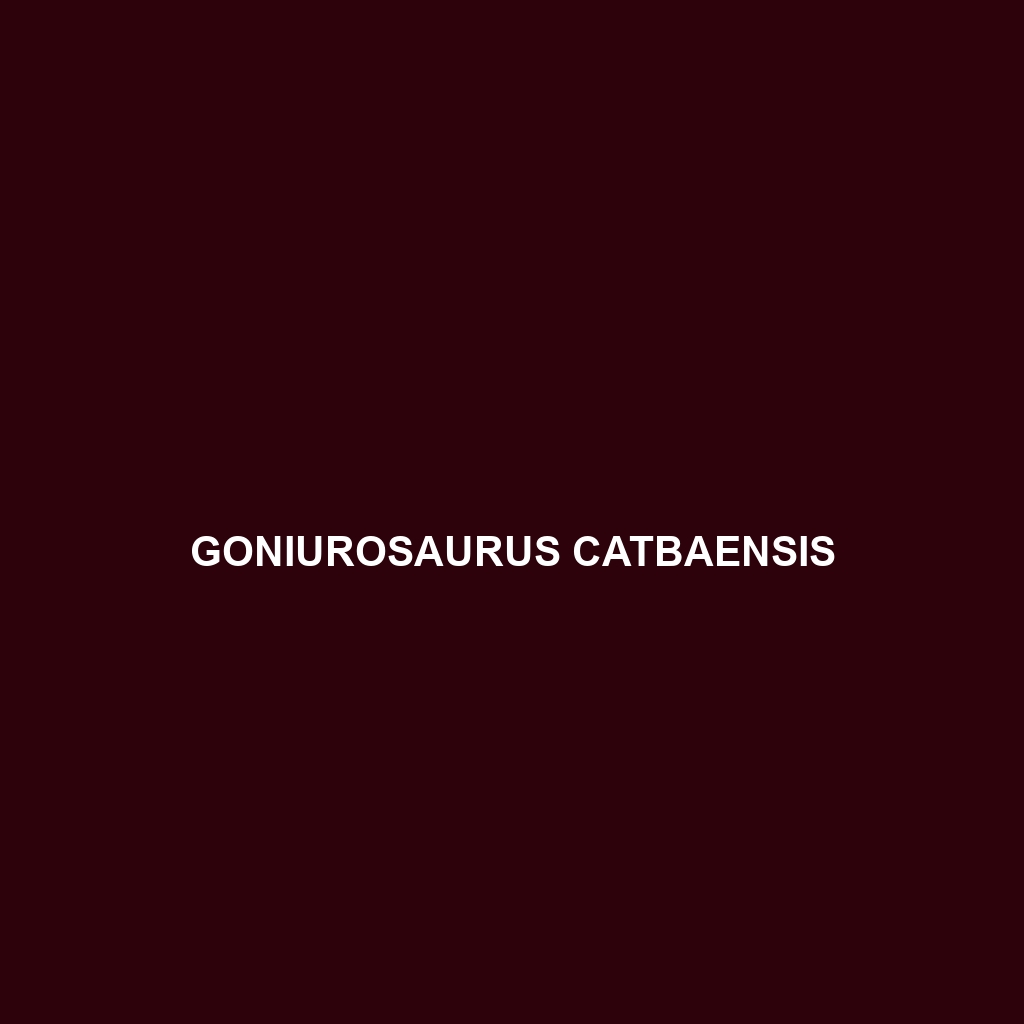Common Name
Goniurosaurus catbaensis
Scientific Name
Goniurosaurus catbaensis
Habitat
The Goniurosaurus catbaensis, commonly known as the Cat Ba striped gecko, is primarily found in the lush rainforests and steep limestone mountains of Cat Ba Island, located in the northern part of Vietnam. These geckos thrive in tropical environments characterized by high humidity and temperatures, which are ideal for their survival. Their habitat consists of dense vegetation, rocky crevices, and areas close to freshwater sources. The climate is typically warm and humid, which supports a rich biodiversity essential for the gecko’s ecosystem, making it an integral part of these rainforest habitats.
Physical Characteristics
Goniurosaurus catbaensis is distinguished by its striking appearance. Adults typically reach lengths of about 20-25 cm (8-10 inches), with a robust and elongated body. Their skin is marked by distinctive color patterns; usually, a combination of earthy tones with prominent dark stripes along the back. The limbs are well-developed, enabling agile movement across rocky surfaces. Additionally, they possess large, bulging eyes which not only enhance their vision but are also a characteristic feature of many nocturnal reptiles, further indicating their adaptation to night-time activity.
Behavior
This species exhibits nocturnal behavior, being most active during the night. The Goniurosaurus catbaensis often engages in social interactions during mating rituals, where males display dominance through elaborate physical displays. Interestingly, these geckos are known to have a territorial nature, often marking their territory with pheromones. They are also proficient climbers, adept at navigating vertical surfaces, which plays a crucial role in their hunting and evasion strategies against predators.
Diet
Goniurosaurus catbaensis is primarily insectivorous, feeding on a diverse range of insects such as crickets, beetles, and moths. Their diet may occasionally include small invertebrates and other arthropods, showcasing some omnivorous tendencies. These geckos are ambush hunters, relying on stealth and their camouflaged bodies to catch prey. Their feeding patterns demonstrate adaptability to the availability of food sources in their rainforest habitat, which is abundant in various nocturnal insects.
Reproduction
The reproductive cycle of the Goniurosaurus catbaensis typically occurs during the wet season, aligning with the abundance of food resources. Mating usually occurs in spring, with females laying clutches of 2-4 eggs. The incubation period lasts approximately 60-70 days, commonly taking place in a moist environment to ensure the development of the eggs. After hatching, juveniles are independent and exhibit behaviors similar to adults. Parental care is minimal, which is common in many gecko species, emphasizing the need for offspring to quickly adapt to their environment for survival.
Conservation Status
The Goniurosaurus catbaensis is currently categorized as ‘Vulnerable’ by the International Union for Conservation of Nature (IUCN), primarily due to habitat loss and degradation caused by human activities such as deforestation and urban development. Conservation efforts are underway to protect its natural habitat, including initiatives aimed at establishing protected areas within Cat Ba National Park. However, continued monitoring and protection of its environment are critical to ensure the survival of this unique gecko species.
Interesting Facts
One fascinating aspect of the Goniurosaurus catbaensis is its ability to regenerate its tail, a common trait among geckos. This adaptation serves as a defensive mechanism, allowing them to escape predators while leaving part of their tail behind. Additionally, these geckos exhibit a unique social hierarchy within their populations, displaying intricate behaviors that help maintain their social structure.
Role in Ecosystem
The Goniurosaurus catbaensis plays a vital role in its ecosystem as a predator of various insects, helping to maintain the population balance within its habitat. By controlling insect populations, these geckos contribute to the health of the ecosystem. Furthermore, as prey for larger predators, they are an essential part of the food chain, indicating a healthy ecosystem dynamic. Their presence highlights the importance of biodiversity in rainforest habitats, stressing the need for conservation efforts to safeguard their environment.
